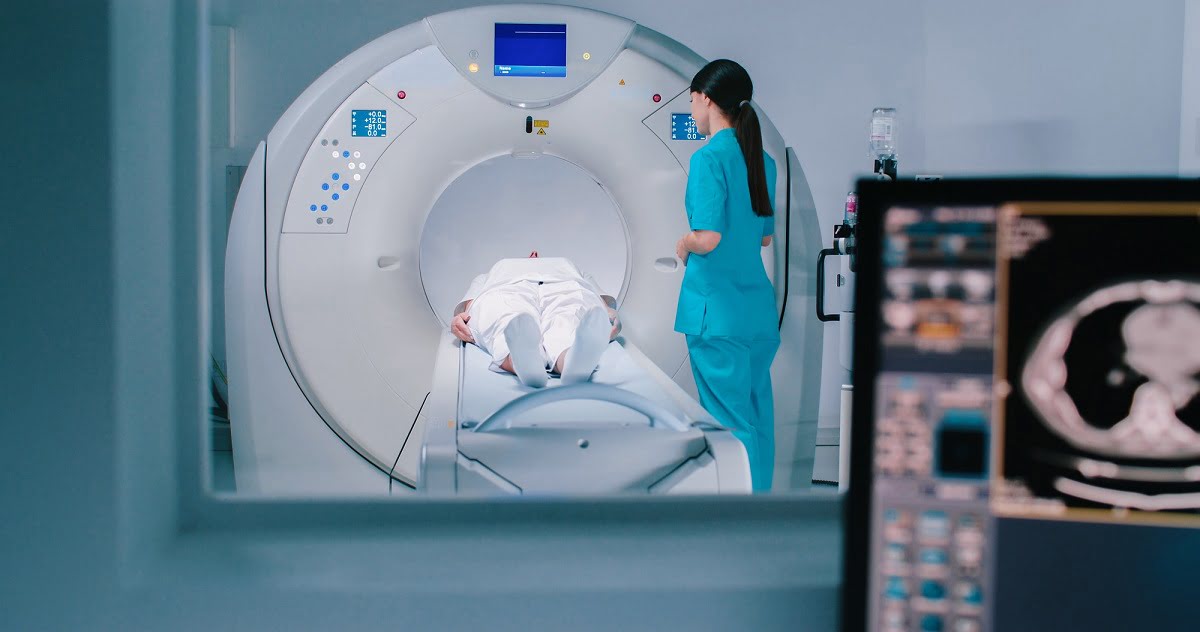Why is a CT Scan of the Orbit Important?
A CT scan of the orbit is crucial for evaluating a variety of conditions that affect the eye and surrounding structures. The detailed images obtained from a CT scan help in diagnosing problems that might not be visible through a physical exam or standard X-rays. Here are the main reasons why this test is important:
1. Diagnosis of Fractures: A CT scan is highly effective in detecting fractures of the orbit (eye socket), especially after trauma. It can reveal fractures of the orbital bones, including the zygomatic bone (cheekbone) and the walls of the eye socket, and determine the severity and exact location of the damage.
2. Evaluation of Eye Tumors: The CT scan centre helps in detecting eye tumors, whether benign or malignant. It can also assess the size, location, and involvement of adjacent structures, aiding in the determination of the appropriate treatment or surgical plan.
3. Orbital Infections and Inflammation: Infections in or around the orbit, such as orbital cellulitis (infection of the tissues surrounding the eye), can be detected with a CT scan. It helps in assessing the extent of the infection and any involvement of adjacent sinus cavities or structures.
4. Assessing Thyroid Eye Disease: Conditions like Graves' disease can cause the eyes to bulge (proptosis), and a CT scan can assess the enlargement of the muscles or fat around the eyes. This is helpful for monitoring disease progression and planning treatment.
5. Orbital Deformities: Congenital or acquired deformities of the orbit can be evaluated using CT imaging. Whether it's a developmental abnormality or a condition resulting from surgery or injury, CT provides detailed insight.
5. Evaluation of Sinus-Related Issues: Since the sinuses are close to the orbit, conditions like sinusitis can affect the eye area. A CT scan can help assess any connection between sinus issues and orbital problems.
How is a CT Scan of the Orbit Performed?
A CT scan of the orbit is typically performed as follows:
1. Preparation: Usually, no special preparation is required before a CT scan of the orbit. Patients may be asked to remove any metal objects, such as jewelry or eyeglasses, to avoid interference with the imaging.
2. Positioning: The patient lies on a table, and the head is positioned inside the CT scanner. The technician ensures that the area of the orbit is aligned properly for imaging. Depending on the specific area of concern, the patient may be asked to remain still or hold their breath for a few moments to ensure clear images.
3. Imaging Process: During the scan, the CT scanner rotates around the head, taking multiple images from different angles. These images are then reconstructed into detailed, cross-sectional slices.
4. Use of Contrast: In some cases, contrast dye may be injected intravenously to enhance the images. This helps highlight blood vessels, soft tissues, and any abnormal areas, such as tumors or infections.
5. Post-Scan: After the scan, patients can typically resume their regular activities. If contrast dye was used, they may be advised to drink fluids to help clear it from the body.
Who Should Consider a CT Scan of the Orbit?
A CT scan of the orbit may be considered for individuals experiencing any of the following:
1. Trauma or Injury: Patients who have suffered an injury to the face or head, especially around the eyes, may need a CT scan to assess for fractures, bleeding, or damage to surrounding structures.
2. Vision Problems: If a patient has unexplained vision changes, double vision, or bulging eyes (proptosis), a CT scan may help identify underlying causes, such as thyroid eye disease, tumors, or fractures.
3. Infections or Inflammation: Those experiencing swelling, pain, or redness around the eyes, which could indicate an infection like orbital cellulitis, may require a CT scan to determine the extent and cause of the issue.
4. Suspected Eye Tumors: If a tumor or abnormal growth is suspected, a CT scan provides detailed images that help in determining the size, location, and possible spread of the tumor.
5. Thyroid Eye Disease: Patients with thyroid-related eye problems, such as Graves' disease, may need a CT scan to monitor the condition of the orbit and the muscles or fat around the eyes.
6. Unexplained Eye Pain: If a patient experiences persistent or unexplained eye pain, a CT scan can help identify potential causes, such as infection, tumors, or orbital structural issues.









